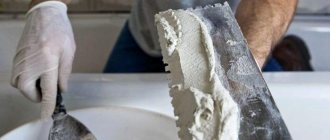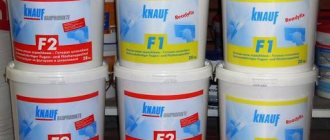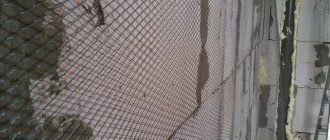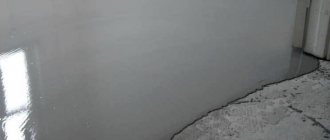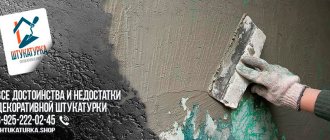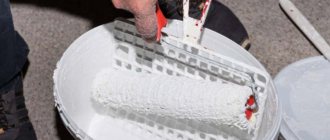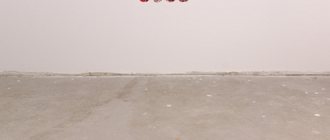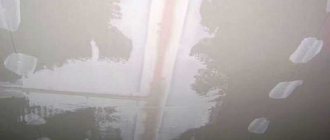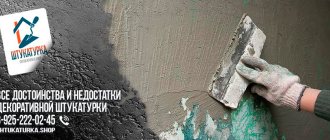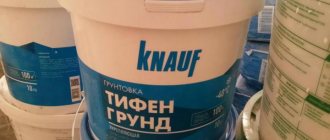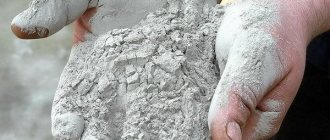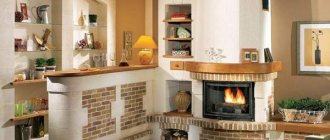Putties under the Knauf brand: starting, finishing and universal - are an integral part of any construction. This German company has been producing finishing materials for a long time and has managed to gain recognition throughout the world. Major renovations in an apartment inevitably involve leveling the walls. To do this you will need starting and finishing putty. The first is necessary for preliminary (rough) preparation of the base, the second - for the final stage. Let's figure out why you should give preference to Knauf, because putties are presented in a fairly wide range on the construction market.
Peculiarities
All putties from Knauf are ready-made mixtures that can be used by absolutely anyone. For convenience, all products are packaged in paper bags of 25-30 kilograms. Putties are divided according to method of application and composition. The following categories can be distinguished:
- Putty start. It is made on the basis of gypsum or cement. Can be used for finishing walls and ceilings in residential premises. Thanks to its composition, it has a good margin of safety and provides additional sound insulation.
- Finishing mixtures. The composition does not require additional grouting after application. In essence, this is a finished surface finishing.
- Universal compositions. They are characterized by fast setting. For the universal putty to adhere to the base, it is enough to wait only 30 minutes. It is worth noting that this mixture fully lives up to its name. It can be used to level walls and ceilings and eliminate joints. In addition, these compounds can be used on any surface. They contain astringent polymer additives that ensure reliable adhesion.
What is Knauf-Fugen putty
The German company is known to a wide audience in many countries around the world. Most consumers pay attention to Knauf brand products when the need arises to repair their own home. This is a dry mixture made on a gypsum basis. However, it imposes certain restrictions on its use.
Plaster does not withstand constant contact with moisture. This is especially critical in the case of direct exposure to putty and water. In addition to gypsum, the building composition contains a number of additives, which can improve the quality of the product. Some components slow down the setting of the mixture, others retain water. It is worth noting that the gypsum solution itself hardens quickly. This problem is solved by including substances that prevent moisture evaporation. As a result, Fugen putty retains its viscosity for a long time.
Both gray and white compositions go on sale, but there are no differences in properties between them. The mixture is packaged in bags of 5, 10, 25 kilograms. In order not to lose the quality of the putty, it is necessary to add the required amount of water, as indicated in the instructions.
Knauf Fugen putty is intended for interior work.
Technical and operational characteristics
The high demand for construction mixtures of the Knauf brand is due to no less high quality indicators. But before making the final choice in favor of one or another putty, it is necessary to study its properties. Despite the presence of several variations, they are all little different and are used in a similar scenario. Therefore, it is worth considering the technical characteristics of the conventional mixture, as it is more widely used:
- The grain size is 0.15 mm - this fine-grained structure allows you to create an even finishing layer. The largest fraction can reach up to 0.2 mm.
- The thickness of the laid coating is 1-5 mm. However, in most cases the layer rarely exceeds 3 mm. This creates an unnoticeable and strong base foundation.
- To ensure long service life, the room temperature should be maintained at the recommended temperature. The minimum threshold below which you should not fall is +10 °C.
- The drying time of the solution is 30 minutes. The exact interval depends on operating conditions, as well as the volume of the mixture mixed.
- The shelf life of the building material is no more than 6 months, and therefore, before purchasing, you need to calculate in advance how much putty will be needed for finishing work. But subject to storage conditions.
- Compressive strength is more than 2 MPa.
- Bending strength – starting from 1 MPa.
- Surface adhesion indicators – from 0.5 MPa.
- 1 kg of dry mixture is spent on preparing 1.3 liters of solution.
Thanks to the components of Fugen GF putty, a high-strength base is created, prepared for finishing. Fugen Hydro mixture can be used as a starting putty due to the fact that it is suitable for use in rooms where there is a constant high level of humidity. Fungi, mold and other pathogens do not develop on the finished coating.
Thanks to the plasticity of the mass, it is easy to work with
Area of use of putty
A standard gypsum-based putty composition is used for interior work. Despite this, the list of tasks is far from small:
- Sealing the seams of concrete floors.
- Professional processing of gypsum board joints (regardless of the type of edges).
- Restoration of coatings made of various materials - gypsum plasterboard, concrete, tongue-and-groove blocks.
- Treatment of the entire surface of walls and partitions
- For reinforcement - during fastening of mesh or special corners.
- As an adhesive for fastening plasterboard sheets to a leveled vertical surface.
- Creating a base coat for wallpapering.
- Filling recesses at installation points of fasteners (masking screw heads).
Attention!
Compliance with the technology of applying the material allows you to avoid many undesirable consequences. In this case, the putty does not crack, and the shrinkage rates are so minimal that it is invisible to the naked eye.
The putty composition can be used for various purposes without the risk of loss of properties
Knauf Rotband
The best option for finishing interior spaces. The mixture can be called universal. It is suitable for leveling concrete, brick and polystyrene foam bases, and can be applied to walls and ceilings. In addition, the putty is impervious to damp environments, making it suitable for use in bathrooms and kitchens.
USEFUL INFORMATION: Decorating walls with decorative bark beetle plaster
Putty Start Rotband has a number of undeniable advantages:
- Good moisture conductivity. After using this putty, moisture does not remain in the room, and therefore there will be no dampness in the apartment.
- Environmentally friendly. There are no harmful chemical elements in the composition. The putty is based on gypsum, which does not cause allergic reactions in the body. Such mixtures can be used to decorate a children's room.
- Reliability. Rotband does not crack even when applied in a thick layer.
If the instructions for use are strictly followed, the result is an absolutely flat surface on which the finishing can be applied. Rotband putties can be of three shades: white, pink and gray. It is worth noting that the recommended application thickness can vary from 5 to 30 mm. About 8 kilograms of material will be required per square meter of area. Complete drying time is 6 days.
Buy Knauf Rotband online
Buying online is very convenient and safe: you can purchase the mixture without leaving home or visiting a store. All purchases will be delivered to your home.
In addition, in the online store, on each product page you can see the exact characteristics and real customer reviews.
Packaged in 30, 10 and 5 kg:
- Gypsum plaster Knauf Rotband, 30 kg >>>
- Gypsum plaster Knauf Rotband, 10 kg >>>
- Gypsum plaster Knauf Rotband, 5 kg >>>
Types of putty mixtures
The main purpose of putty mixtures is finishing and leveling various surfaces, sealing cracks and potholes in the wall. The Knauf company offers a wide range of materials for different jobs. Let's consider all existing types of products of this brand.
By composition
There are three types of Knauf putties on the construction market today, which differ in the components included in their composition:
- gypsum;
- cement;
- polymer.
Knauf gypsum putties are distinguished by their affordable price, ease of leveling and complete absence of shrinkage. The main disadvantage of this product is its low resistance to moisture. Because of this, these compositions are applicable only for interior decoration of dry rooms. Cement putty compositions are highly resistant to moisture, but high shrinkage can also be noted here.
Due to their unique composition, polymer materials have all the advantages of gypsum and cement mixtures. Products in this series guarantee complete moisture resistance as well as low shrinkage. Using the compositions of this series, you can achieve very high-quality results. The only disadvantage is the high price.
By purpose
Finishing products are also classified according to their purpose and area of use. Thus, the following types can be distinguished:
- basic (starting) putty;
- decorative or finishing;
- universal mixture.
Starting materials are characterized by fairly high strength. Also among the characteristics we can highlight maximum adhesion to all surfaces without exception. Such putties have a granular structure, which makes them suitable only for leveling surfaces after plastering.
Knauf finish putty is applied immediately before finishing. Unlike basic products, this material has less strength, but this is compensated by ease of application. Finishing Knauf mixture is used when you need to mask any imperfections on the surface as much as possible. After application and drying, a perfectly flat and smooth surface is formed. The structure of the mixture is more delicate and finely dispersed.
Universal products are another type of finishing materials from Knauf, which combine all the advantages of the mixtures already described. These compounds are used to seal large flaws on any surface. As for the cost, such products have a higher price, since their characteristics are higher than others.
By degree of readiness
Knauf putties are also classified according to the degree of readiness. Among the product lines are:
- dry putties;
- ready-made mixtures.
The dry composition is intended for application to various types of surfaces, including drywall. Such material has a long shelf life, but it must be stored only under certain conditions. It is not recommended to keep the mixture in places of high humidity - this may lead to hardening.
Some craftsmen are sure that the main disadvantage of using dry products is that a lot of dust is generated when working with them. But this is a dubious drawback - when working with a hammer drill and a concrete wall, there is much more dirt and dust. Dry mixtures are used by qualified specialists, since the final result depends on the exact observance of proportions during the preparation of putty.
Important! After the dry putty has been diluted with water and mixed, it must be used immediately, otherwise the mass will very quickly lose its properties.
The finished putty mass is sold in convenient containers - in buckets, does not require preliminary preparation, and in the process of working with it no dirt or dust is formed. But, unlike dry products, the price category of ready-made putty is much higher. You can also highlight a high degree of shrinkage. The downside is shorter shelf life.
On the video: which is better - ready-made putty or dry.
Knauf Goldband
In essence, this is a variation of the previous plaster, but there are significant differences between the two mixtures. For example: Goldband is for walls only. There are no adhesive components in the composition. Therefore, after complete drying, the putty may simply fall off the ceiling. But it is ideal for processing brick and concrete bases with deep relief. It is worth noting that Goldband can be applied in a fairly thick layer - up to 50 mm. The remaining characteristics of the putty are identical to Rotband Knauf.
Assortment of gypsum putty
The company's catalog contains only three types of Knauf Rotband products. Each option has an individual purpose, composition, technical characteristics and performance properties. To choose the most suitable option, it is necessary to consider in detail each proposal from the manufacturer, as well as such nuances as the cost of mixtures, how long it takes for Rotband to dry before puttying, and other parameters.
Knauf-Rotband Finish
Rotband Finish 25 kg is a dry consistency that is used indoors. The composition is based on gypsum binder components, as well as polymer components that strengthen the coating.
Knauf-Rotband Finish, 25 kg
The purpose of the product is to create a thin putty layer on the following surfaces:
- concrete;
- drywall;
- cement plaster;
- gypsum fiber materials;
- tongue-and-groove canvases.
Using finishing putty, you can create a high-quality base for subsequent decorative painting, wallpapering or other coatings. This mixture is not used for sealing cracks and joints between plasterboard sheets.
Main parameters of Rotband wall putty:
| Minimum thickness, mm | 0,2 |
| Maximum thickness, mm | 5 |
| Diameter of inclusions, mm | 0,15 |
| Compressive strength, MPa | More than 2 |
| Bending strength, MPa | More than 1 |
| Rotband consumption per 1 m2 | 1 kg |
| price, rub. | 410 |
The product is packaged in dense bags of 25 kg. Rotband gypsum putty must be stored in a dry room on special wooden pallets. Products with damaged packaging are consumed first, as they quickly lose their properties. The maximum shelf life of an unopened bag is six months from the date of production. The release date is indicated on the side of the packaging.
Universal gypsum plaster Knauf Rotband
This is a universal material of the Rotband brand with a volume of 30 kg. It is used to perform exclusively internal preparatory work for cladding. Used for plastering ceilings on a solid base of brickwork, concrete, and cement plaster. To obtain the highest quality coating, it is necessary to create an optimal level of humidity in the room. Consumption per 1 m2 does not exceed 0.95 kg, but it should be taken into account that this calculation is relevant only if applied in one layer 1 mm thick.
Gypsum plaster Knauf Rotband
Using the mixture, you can create a perfectly smooth surface in one layer or several. Remember, before applying each subsequent layer, you must wait until the previous one has completely dried. The material is resistant to cracking due to the presence of polymer components. It is completely environmentally friendly, which is why it is often used for children's rooms.
It is recommended to apply the solution in a layer up to 5 mm thick. The material can be used as putty to create a multi-layer structure. The mixture is distinguished by its increased moisture-retaining property, which allows it to be used in combination with a base that strongly absorbs water. Also, this factor allows the walls to “breathe”, which allows you to regulate the microclimate in the rooms. The price of the package varies within 300 rubles.
Gypsum plaster Knauf Iceberg
Knauf Eisberg gypsum plaster is used for leveling walls and ceilings in dry rooms, repair and restoration work. The material is universal and does not require subsequent puttying. The main component of the building mixture is high-quality gypsum, which is an environmentally friendly and lightweight material. Package weight - 30 kg.
USEFUL INFORMATION: Fireplace hoods for the kitchen: corner and dome type
Gypsum plaster cannot be used in conditions of high humidity, otherwise it is universal and can be used for different substrates:
- concrete of different structures (dense and cellular);
- cement plaster;
- stone and brick;
- expanded polystyrene and DSP.
Advantages of gypsum plaster
The material “breathes”, regulates the amount of moisture in the air, absorbing it when there is excess and releasing it when there is a deficiency. Creates a favorable indoor microclimate.
The mixture is plastic and easy to apply; it is easier to work with than other types of plaster. The coating provides good heat and sound insulation. The consumption of gypsum mixture is significantly lower compared to cement.
Packaged in 30 kg packs: Knauf Iceberg gypsum plaster 30 kg >>>
Types of Knauf Fugen putties
Various types of putty are available for sale:
- "Fugenfuller" (Knauf Fugen) - standard Knauf mixture.
- Fugen GF is a composition intended for finishing works on plasterboard sheets (GKL).
- Fugen Hydro is a moisture-resistant gypsum composition for processing gypsum fiber materials.
Note!
It is advisable to use each type of putty for its main purpose, based on the type of surface.
Fugenfüller or Knauf Fugen
The standard mixture for professional processing of joints of plasterboard panels does not crack after drying. For the manufacture of the composition, only environmentally friendly raw materials (gypsum) are used, and therefore there are no harmful emissions.
Knauf Fugen GF
Fugen GF mixture completely covers the entire surface of gypsum fiber sheets. The composition itself is durable and at the same time elastic. No cracks form on the treated and dried surface. The Fugen GF option is the same standard gypsum putty, but with the inclusion of polymer additives. There is no harmful effect on the human body.
Knauf Fugen GF – for continuous puttying of GVL
Knauf Fugen Hydro
This is a moisture-resistant gypsum option that is suitable for effective processing of gypsum board joints. It is also used when installing plasterboard slabs with tongue-and-groove fastening. When dry, the putty shrinks minimally and does not crack. Due to the content of environmentally friendly polymer and hydrophobic components, the mixture is resistant to moisture.
Knauf Fugen Hydro - moisture-resistant gypsum putty for treating joints
Comparison of Knauf Fugen and Fugen Hydro putties
The main difference between Fugen and Hydro putties is that Knauf-Fugen is a regular compound, while Fugen-Gidro is a moisture-resistant mixture. Due to the inclusion of hydrophobic components in the composition, Fugen Hydro putty is used to treat surfaces of rooms with high humidity.
Otherwise, there is no difference between these types of putties. Even the areas of application are largely similar.
Putty Start Knauf HP
This putty is available in two variations: for manual or machine use. This information is usually indicated on the packaging. For example: the MP 75 marking indicates that the mixture is intended for machine finishing of premises.
Important! Mixtures for machine use can be used manually, but vice versa is strictly prohibited! Putties for manual use can ruin expensive finishing equipment.
Knauf HP Start is suitable for any hard surface. The maximum thickness of the applied layer should not exceed 30 millimeters. The composition dries in about 7 days; for one square meter of area you will need about 10 kilograms of material.
It is worth noting that this gypsum putty can be combined with other types of plasters.
Reviews
Choosing a manufacturer who specializes in producing high-quality building mixtures is the key to successful finishing. Most professional finishers prefer the Figenfluger Knauf mixture. There is also no doubt about the durability of the company’s materials.
Was this information useful to you? Share in the comments!
Finishing putty Knauf Rotband Pasta Profi
Finishing putty “KNAUF Rotband Pasta Profi” is used at the finishing stage of interior finishing. It gives the walls a pure white color and masks the smallest cracks. Suitable for application in a thin layer (up to 0.2 cm) on a base made of concrete, plasterboard and other materials.
Consumption for continuous application is about 0.5 kg per m2. After drying, the KNAUF Rotband Pasta Profi putty can be applied with paint or wallpaper of any type.
USEFUL INFORMATION: Gypsum fiber sheets technical characteristics
Packaged in 5 and 18 kg:
- Finishing putty Knauf Rotband Pasta Profi, 5 kg >>>
- Superfinish vinyl putty Knauf Rotband Paste 18 kg >>>
Why do you need different putty?
The difference between the mixtures is expressed:
- The use of mixtures in rooms with different temperatures and humidity levels;
- For work at the initial or finishing stage;
- Certain types of putty are relevant for sealing seams;
- Purchasing types convenient for construction/repair or finishing/cosmetic work.
Types of Knauf putty
In addition to the finishing or starting putty used in the repair process, cement putty is also used, which is relevant during construction. It is the best material for eliminating chips, cracks and unevenness.
Mode of application
Working with Knauf dry starting mixtures occurs according to the following scheme:
- Preparatory stage. Before using rough putty, you need to prepare the base. To do this, remove all contaminants from the surface. By the way, the recommended temperature of the treated surface should not be lower than +5 degrees. After this, the main surface must be primed. This is especially true for surfaces that absorb moisture well. For example: aerated concrete blocks or sand-lime brick. As a primer, you can use Knauf products: “Betonkontakt” or “Rotband-Grund”. These primers are diluted with water in a ratio of 1/3 and applied to the surface with a roller or paint brush. Further work can be carried out only after the primer has completely dried. After this, beacons are installed on the surface. These devices will help greatly facilitate the work process.
- Technological process. Let's look at the procedure for working with Knauf dry mixes using START HP as an example. The composition is diluted in the following proportion: 1 bag (25 kg) per 14 liters of water. After pouring, the mixture must be thoroughly stirred until a homogeneous mass is obtained. This can be done by hand or using a mixer.
The solution is applied to the base using a spatula. Before setting begins, it is necessary to level the putty along the installed beacons. It is worth noting that the prepared solution must be used within 30-40 minutes. If the putty will be applied in two layers, it is recommended to make the surface of the first wavy. To do this, you can use a special spatula.
Instructions for use
To obtain high-quality coverage and avoid erroneous actions, you should strictly follow the instructions. In particular, start work when the surface is cleaned and dried. You should also not allow dirt or foreign bodies to get into the putty. Tools must also be clean.
There are several ways to use the Knauf-Fügen dry mixture:
- continuous surface coating;
- installation of KNAUF-gypsum board partitions;
- processing of joints of gypsum board sheets.
Each case has its own characteristics that should be taken into account. Otherwise the work will have to be redone.
Complete puttying of concrete surfaces
The solid technique is used in case of minor unevenness. Buying expensive putties is not practical from an economic point of view. A day before the start of work, the surface is primed.
The putty is applied to the walls using a spatula or trowel. Any technique is used that is convenient. For example, cross-shaped - first follow vertical stripes, then change direction to horizontal movements for leveling. Or perform fan-shaped manipulations.
The thicker the layer, the more liquid the plaster should be.
Installation of KNAUF gypsum boards
Putty is convenient when attaching plasterboard. During installation, the solution is applied to the recesses of the slabs:
- bottom row groove;
- vertical groove from the end part.
Next, the gypsum board is pressed tightly, and the remaining remaining mixture is removed. The process is reminiscent of laying bricks using cement mortar. When the installation of the slabs is completed, the seams are sealed with fugagypsum putty.
Sealing joints of plasterboard sheets
Processing of gypsum board seams is carried out in several approaches. The Uniflot composition was developed specifically for these zones. The sequence of actions varies depending on the type of edge. It can be straight or folded. Processing joints of gypsum board sheets with a straight edge:
- The seams are filled with putty to the full depth, maintaining uniformity.
- Wait until the mixture dries, then clean the surface of the closed joints.
- Cover the sheets with a leveling layer of putty mixture.
Adjacent gypsum board sheets relative to a straight edge are mounted with a gap of 5 to 7 mm. Sequence of actions in the case of a folded edge:
- To begin, apply the first layer of putty.
- A special reinforcing tape or fine mesh is applied and pressed into the putty mixture with a spatula to avoid the appearance of wrinkles and bubbles.
- A second leveling layer is applied to the dried surface.
- When the putty dries, the joints are sanded.
Note!
It is convenient to carry out the work with a 150 mm wide spatula. Moreover, it is advisable to choose a tool that has a handle in the form of a screwdriver tip, in order to tighten protruding screws at the same time.
Plastering is a simple operation that requires only time and patience
Useful tips
- The putty layer should not exceed the values specified by the manufacturer. Otherwise, after drying, the composition may partially crumble.
- If the composition is applied in 2 layers, it is recommended to use reinforced mesh. A second layer is applied only after the previous one has dried.
- After using each portion of the mixture, equipment must be thoroughly washed.
- It is better to dilute Knauf starting putty with cold water. If the mixing water temperature exceeds +30 degrees, the putty may crack after drying.
- If you used Knauf composition for rough finishing of the walls, then it is recommended to also use products from this manufacturer for finishing.
What does the starting putty offer, what are its properties?
This putty is a mixture consisting of gypsum and lime. It is used for interior decoration of rooms in the house in which humidity is constantly maintained within normal limits. Starter putty is also applicable for other types of premises from commercial/office to industrial.
Often this type of putty is used for repair, restoration or construction work in hospitals and hotels.
The purpose of the starting putty is to level the surface before applying subsequent layers, be it finishing putty or other decorative coating.
Starter putty is popular because it is able to regulate the humidity conditions in the room, hides defects in the walls, including cracks or problem areas, and prepares the wall for applying the next layer. It is safe for humans - environmentally friendly and will not harm the health or life of people in the room on the walls of which Knauf putty is applied.
This building material is used in the early stages of renovation. With its help, primary surface problems are eliminated. After drying, the starting putty becomes a surface on which it is convenient to work later, using other building materials, including finishing putty or decorative coating.
The Knauf starter version is offered to the buyer in different weights (packages weighing from 5 kg), so choosing the required quantity for any task is not difficult.
To use the mixture, it is diluted with water and mixed thoroughly, then the builder has 2-3 hours to apply the mixture to the surface.
Putty Rotband starting
Basic
The functions that this type performs are included in the name - processing, leveling surfaces at the initial stage to seal large holes. Apply in a thick layer of at least 2 cm. It should have good adhesion to the wall. Mandatory stage.
Knauf-Rotband Finish
Designed for plasterboard, tongue-and-groove and gypsum sheets. For interior work on top of gypsum and cement plasters. It is economically used and does not generate dust. After kneading, the working ability is maintained for 1.5 hours.
Knauf Rotband Finish
General characteristics:
| Consumption, kg/sq.m | 1 |
| Layer thickness, cm | 0,02-0,5 |
| Packing | Paper bag, dry mix, 25 kg |
| Fraction size (grain) | 0,15 |
| Shelf life | 6 months In a closed package |
Cost 364 rub.
Knauf-Fugen GV
Former name Fügen Fühler. The mixture is intended for interior use. Consists of gypsum, binders and polymer impurities. Almost all of its products are for complex use, and therefore recommends using it with gypsum fiber sheets, more precisely for filling joints and cracks.
Knauf-Fugen GV
But builders use it in other ways:
- puttying concrete and plastered surfaces with a thin layer;
- gluing plasterboard sheets to walls with a difference of up to 4 mm;
- attaching protective metal corners;
- working with gypsum elements.
It may have white, gray and pink undertones, depending on the natural impurities of the gypsum. Color has no effect on quality. The solution is mixed in a ratio of 1:0.8, in particular, 0.8 liters of cold water per 1 kg (water temperature up to 30°C), after which you need to leave the solution for 3 minutes. If you do not adhere to the temperature regime, it may crack. The addition of other substances also affects the quality. The working properties are maintained for 30 minutes before thickening begins, after which water will not bring it back to life. It is recommended to work in small portions.
General characteristics:
| Consumption | GVL joints: 0.3 – 0.6 kg per m2 with continuous puttying with a layer of 1 mm: 0.8 kg/m2 |
| Layer thickness, cm | 0,02-0,5 |
| Packing | Paper bag, dry mix, 25 and 10 kg |
| Fraction size (grain) | no more than 0.2 mm |
| Shelf life | 6 months In a closed package |
Price for 10 kg – from 200 rubles; 25kg – from 390 rub.
Knauf Multi-Finish "White"/"Grey"
Multifinish contains white and gray cement (depending on the name) and polymer admixtures. This putty is used for exterior work, decoration of facades and interior decoration of walls and ceilings. Levels concrete, cement plaster. A high-strength layer of 1-5 mm dries up to three days if the air temperature is +10°C, more than 20°C - 24 hours. The wall must be dry and clean. Mix at the rate of 0.3 liters of water per 1 kg of powder. Can be adjusted depending on the result. Plasticity is maintained for 3 hours. Not susceptible to thermal changes. If there is a risk of cracks appearing on the wall, it is necessary to use reinforced mesh. Do not sand or rub until completely dry.
Multi Finish
General characteristics:
| Consumption | continuous layer 1 mm 1.2 kg/m2 |
| Frost resistance | 25 cycles |
| Packing | Paper bag, dry mix, 25 kg |
| Shelf life | 6 months in closed packaging |
| Shelf life of the finished solution | 3 hours |
Price from 430 rub.
Knauf-Uniflot
It is recommended to mix by hand in small quantities (add water to the thick consistency as you go). In the proportion of 0.5 liters of water per kilo of powder. Used indoors for finishing slabs with perforations, seam joints, and “Superfloor” systems. The mixture is dry, based on gypsum binder with polymer additives, and does not crack. The manufacturer does not recommend thinning the hardened layer to avoid cracking of the surface.
Uniflot
Specifications:
| Consumption | continuous layer 1 mm: 0.4 kg/m2 |
| Layer thickness, cm | 0,1-0,5 |
| Packing | Paper bag, dry mix, 5 and 25 kg |
| Fraction size (grain) | no more than 0.15 mm |
| Shelf life | 6 months in closed packaging |
Price for 5 kg packaging – 365 rubles; 25 kg – 1500 rub.
